Here is some art for you to meditate upon as we look forward to Holy Week. First is a fresco (wall painting) by Pietro Lorenzetti (1280-1348) which is in the basilica in Assisi.
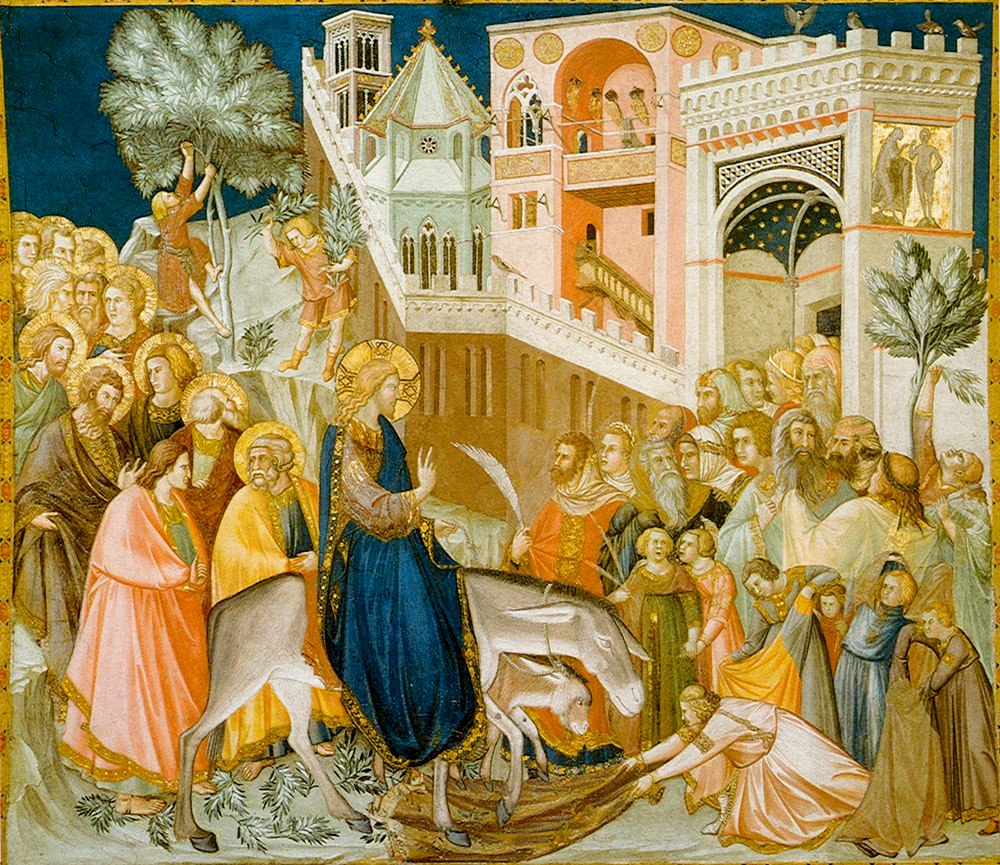
We see Christ entering on an ass, (with a colt, the ‘foal of an ass’) reflecting the account in Matthew. The apostle follow and the Jews greet him at the gate of the city of Jerusalem. The reception from the Jews is mixed, some see him as the Messiah, while others plot to get rid of him after he raised Lazarus from the dead. This sign of the Christ, raising someone from the dead, was an indication of who he was which made him a threat to the corrupt temple staff. Children, in innocent faith, put garments down as a sign of a king and accliaming him. Palm branches are laid on the floor and people climb a tree to see him and to get branches. This scene echoes the annointing Solomon, the first king in the line of David after David himself, who approached Jerusalem on a donkey in that account.
Next, Good Friday. The crucifixion of Christ is shown here in an illumination by the Master of St. Veronica (German, active about 1395 – 1415).
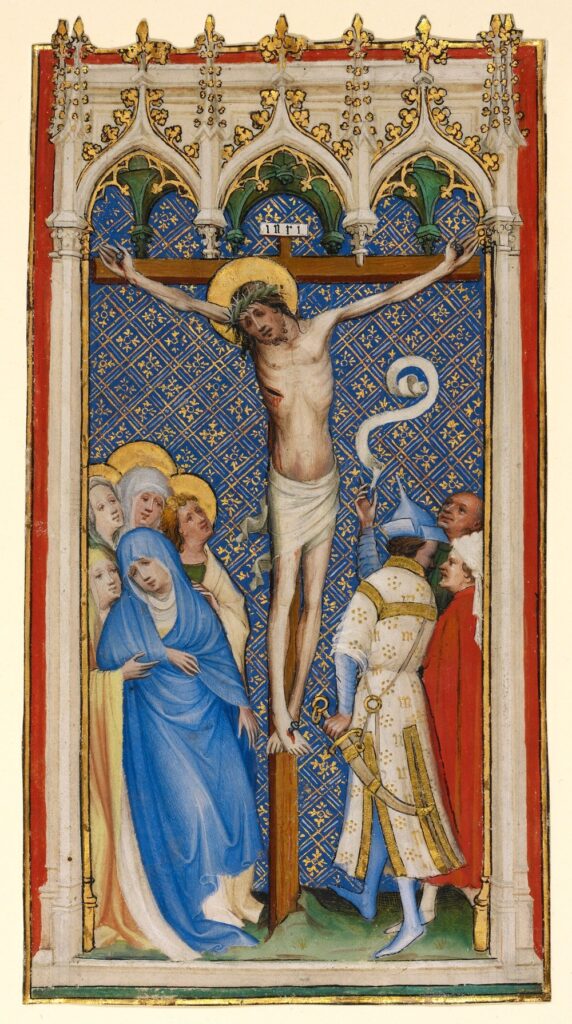
I chose it for the beautiful flow in the lines of drapery around the forlorn figure of Our Lady. The artist has eliminated any sense of depth, as more conventional iconographer would, by putting the blue and gold patterned background around the figures. The flatness is deliberate, the lack of three dimensionality in the image evokes heaven which is outside time and space.
Next, we have what in the Byzantine Rite Churches is called the Resurrection Icon, and in the Roman Church might also be referred to as the Harrowing of Hell. This image speaks of Christ’s descent in Hades and so is appropriate for Holy Saturday. First an icon of the scene:
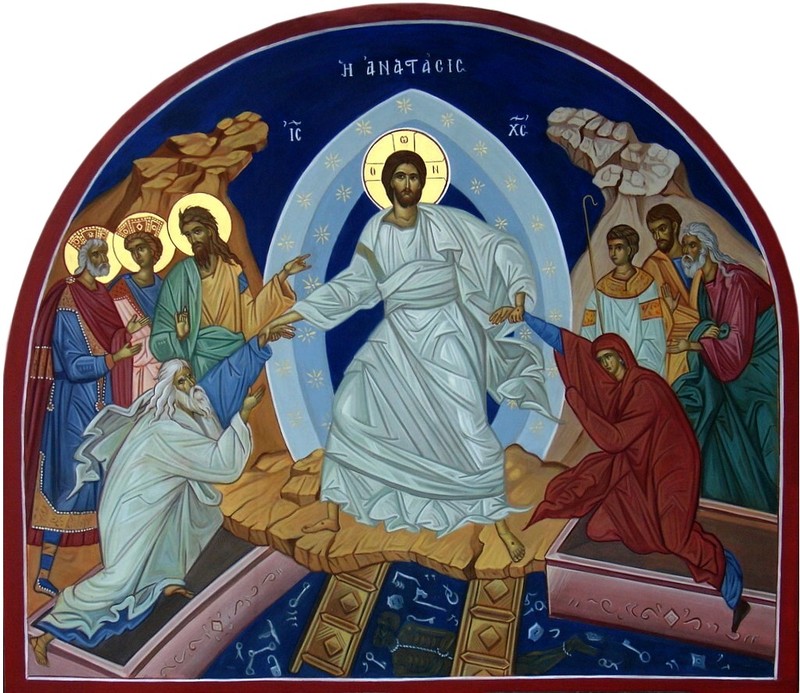
And next a Western rendition of the Harrowing of Hell by Fra Angelico, the 15th century Italian artist.
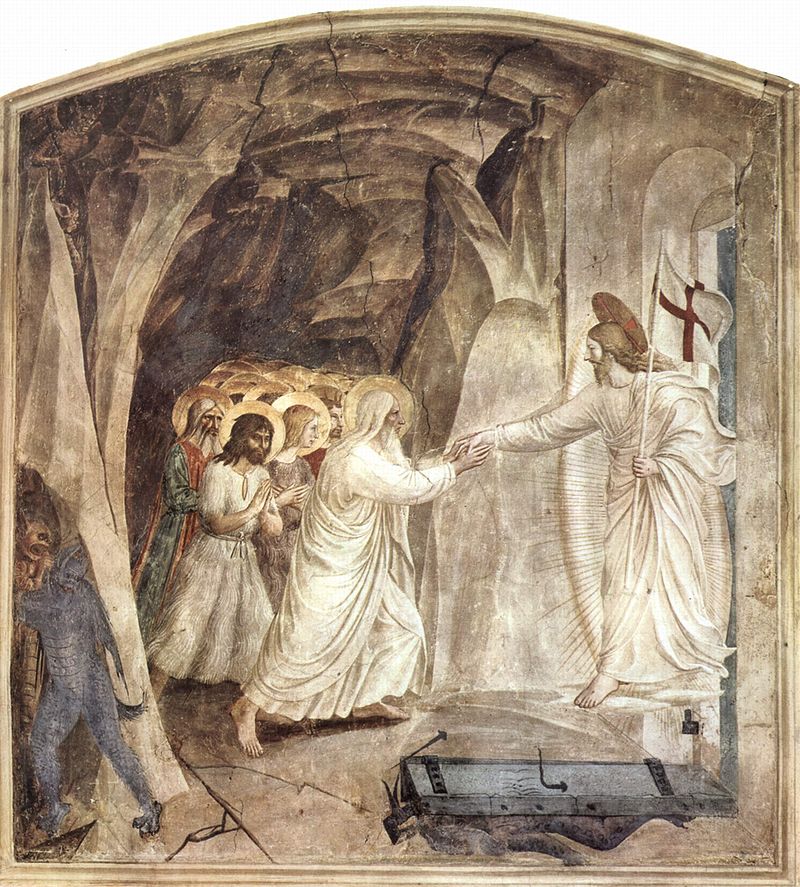
There is a fascinating account of the development of this image in Aidan Hart’s excellent book, Festal Icons, which I recommend everyone to read if they can. He describes how the prototype for the iconographic image actually appeared first in Rome in the 8th century (perhaps with great influence from Byzantine Rite Christians who were present in Rome at the time). He suggests that one reason that the prototype of the Resurrection in this form was so late in emerging was that it was developed to reinforce the assertion, against the heresy of monothelitism and monoenergism prevelent at the time, that Christ descended into hell as the single person, in two natures, divine and human. The image shows the Resurrected Christ bodily descending into Hell to draw out those who might be themselves bodily resurrected. So it is as much an icon of the resurrection of mankind as it is of Christ. Adam and Eve are present, and typically Christ, the new Adam, reaches down to draw up the old Adam. He has trampled down the doors of Hades and discarded the instruments of his death, such as the nails. In the iconographic version, typically present also might be Kings David and Solomon, St John the Baptist, Abel the Just shown as a young man with a shepherd’s crook, Isaiah and other patriarchs.
I like the connection between the good shepherd, Abel from the book of Genesis and Christ, the Good Shepherd and the shepherds who observe the nativity as thread that runs through these biblical events.
The Fra Angelico version has the devil skulking away stage left!
This image makes the transition into Easter itself. In the words of the Exultet, the hymn sung in the Easter Vigil:
This is the night, when Christ broke the prison-bars of death and rose victorious from the underworld. Our birth would have been no gain, had we not been redeemed.
Illustrated scrolls of the Exultet, such as the Barberini Exultet Roll created in Italy in the 11th century have the Harrowing of Hell to illustrate these lines.

Finally, the Resurrection itself. Here is a picture of the Resurrection by Fra Angelico. This shown him having risen standing beside the myrr bearing women and shrowded in uncreated light.
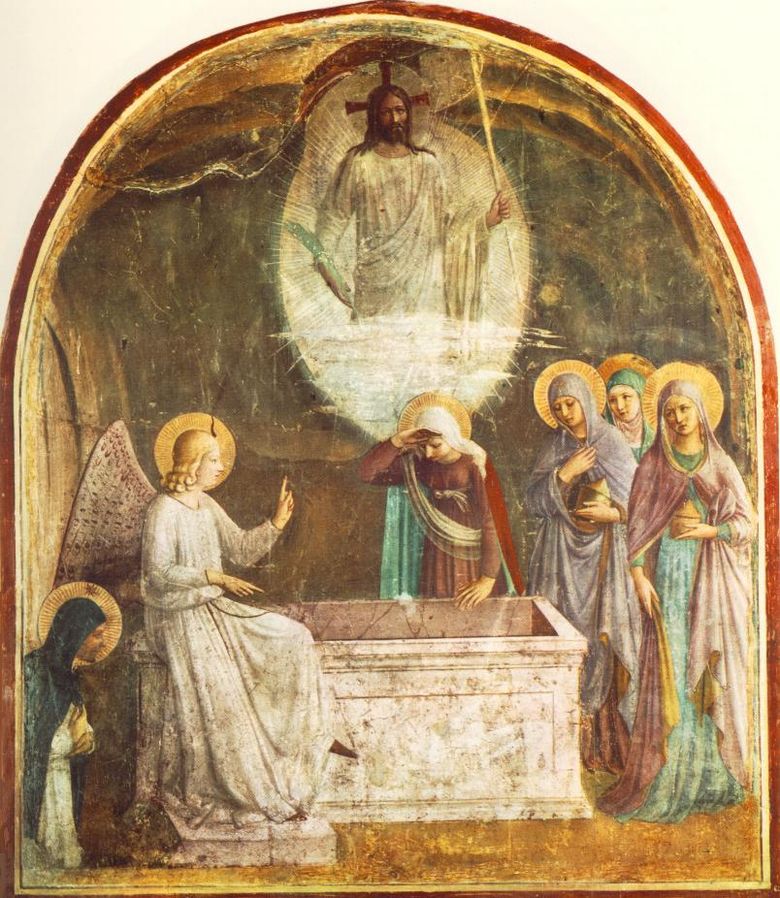
Another reperesntation of the Resurrection shows him actually emerging from the tomb.
Happy Easter, Christ is Risen!
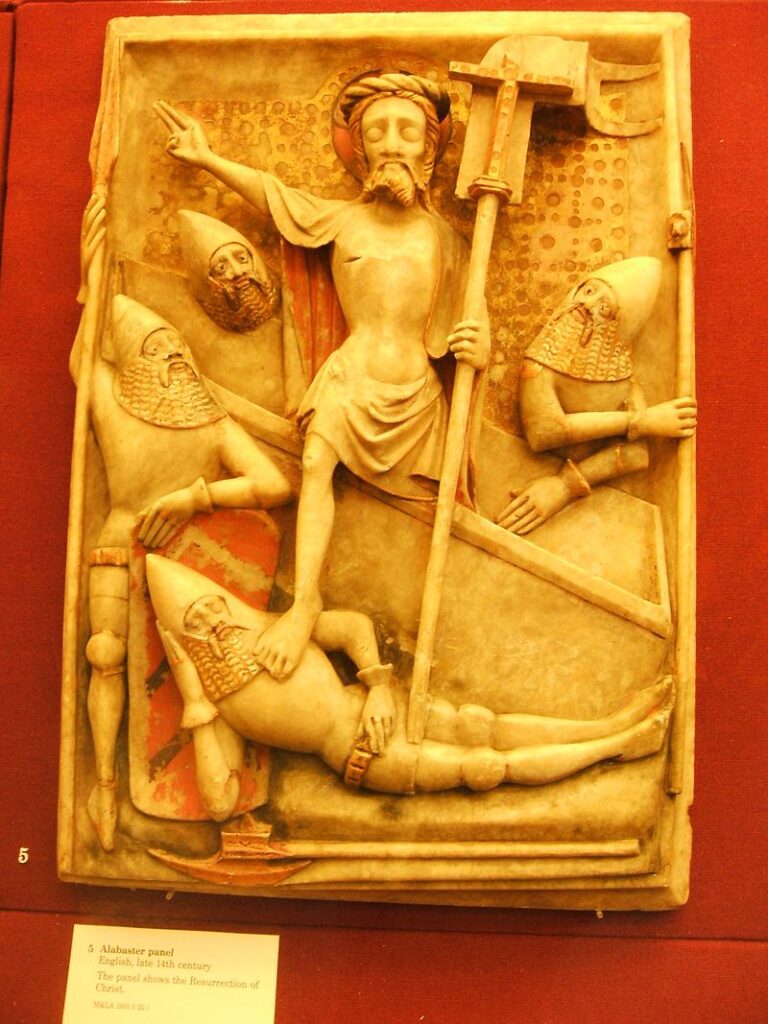
From the Aidan Hart | David Clayton | Easter | Good Friday | Harrowing of Hell | Holy Saturday | Palm Sunday | Resurrrection | Sacred Art series
View more Posts